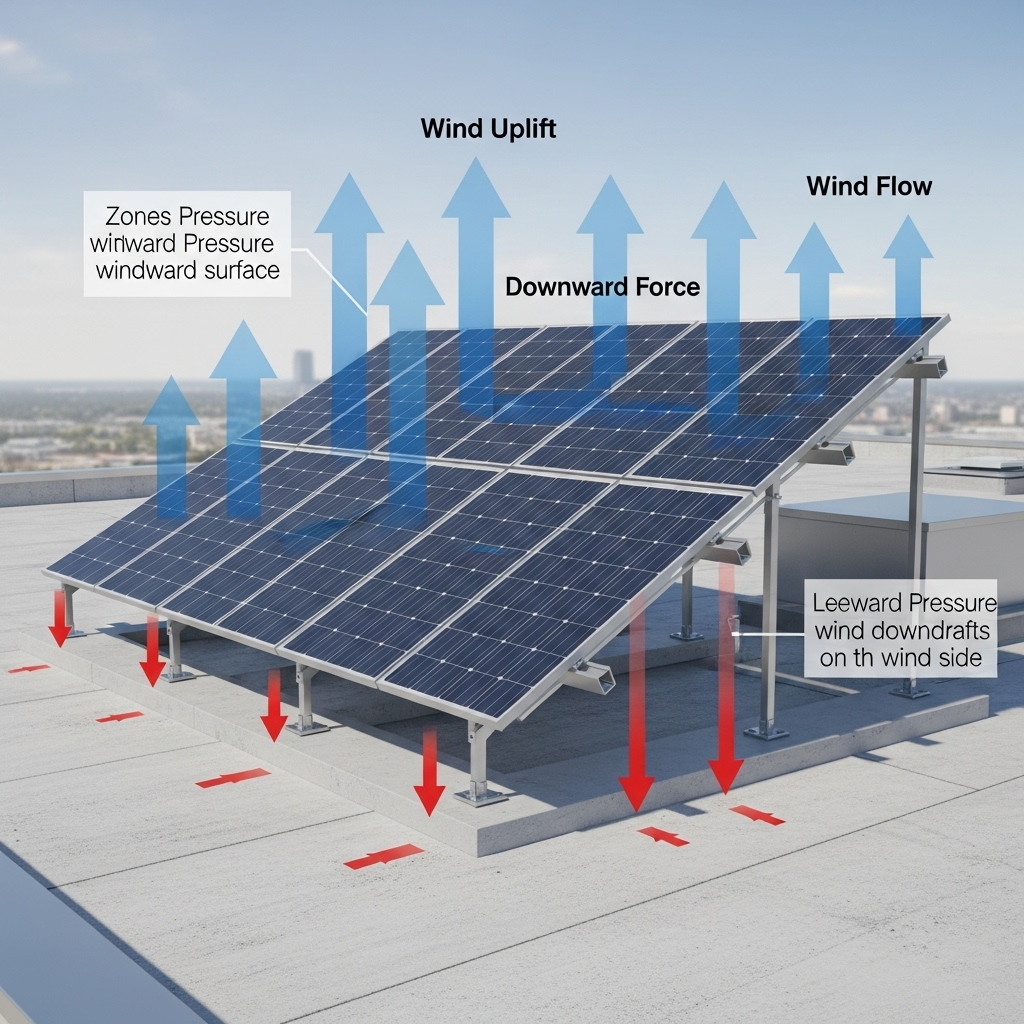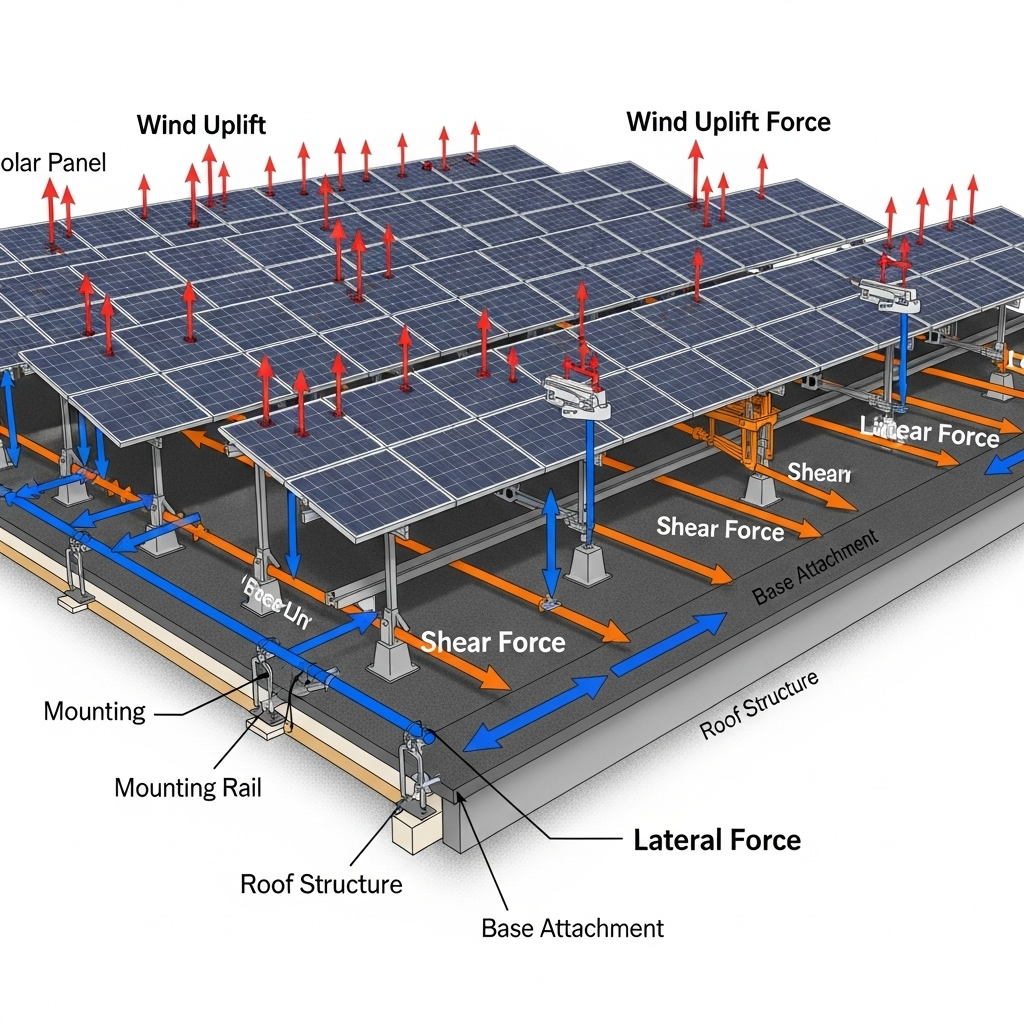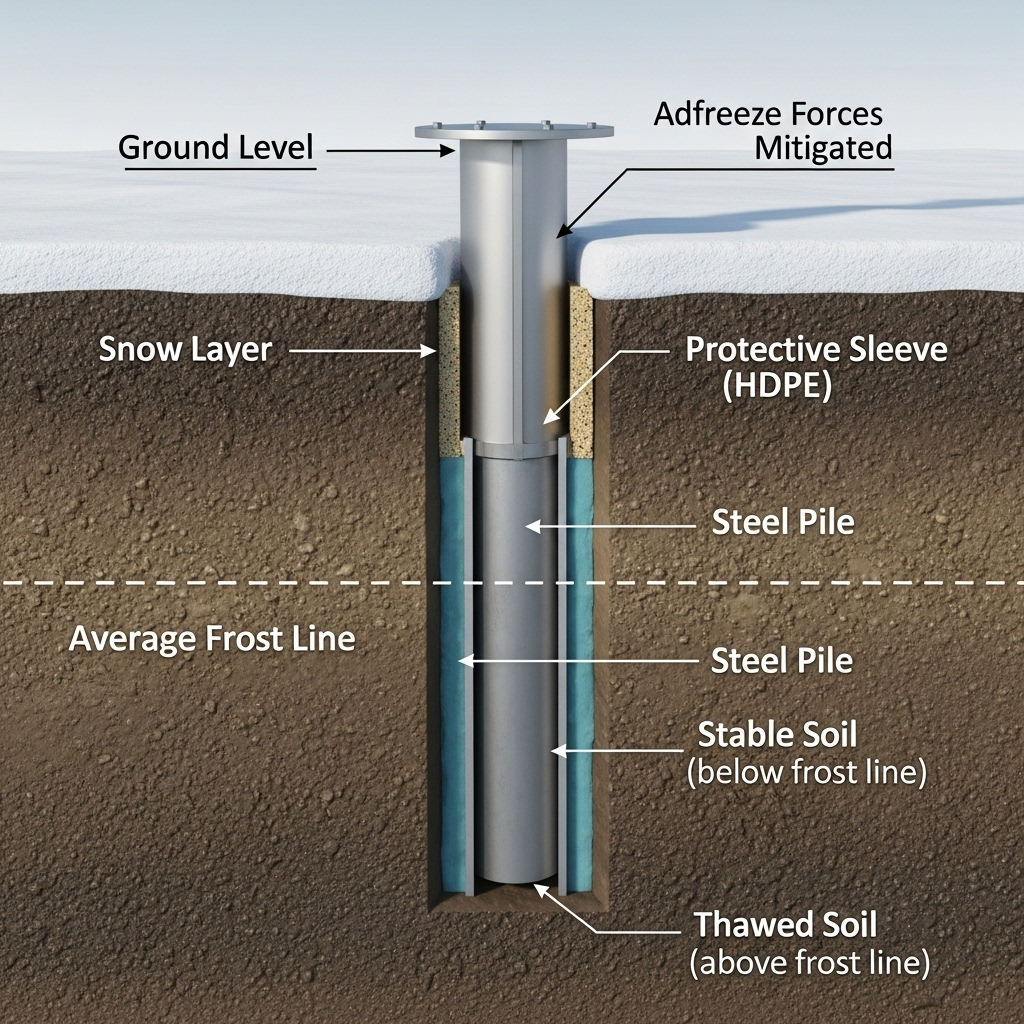Flat roofs present a straightforward platform for solar panel installations, but achieving peak performance and long-term safety depends on a critical detail: the tilt angle. Setting your panels at the right inclination does more than just capture sunlight; it optimizes your energy yield, ensures structural integrity, and can even reduce maintenance. This text explains how to determine the best tilt angles for your flat roof mounting system, balancing power generation with essential safety considerations.
Why Tilt Angle Is Crucial on a Flat Roof
The angle of your solar panels directly influences how much energy they produce and how well they withstand the elements. A carefully chosen tilt is fundamental to a successful flat roof solar installation.
Maximizing Sun Exposure
Solar panels generate the most electricity when sunlight strikes their surface at a perpendicular angle. Since the sun's position changes throughout the day and across the seasons, the tilt angle is a fixed compromise to maximize annual exposure. A common guideline is to set the tilt angle approximately equal to the property's latitude. According to research highlighted by the IEA in 'Next Generation Wind and Solar Power', this rule of thumb serves as an excellent starting point for maximizing total output.
Adapting to Seasonal Changes
You can fine-tune your system's performance to match seasonal energy needs. A steeper tilt angle captures more energy during the winter when the sun is lower in the sky. Conversely, a shallower angle is more effective in the summer when the sun is high overhead. The International Energy Agency notes that a greater tilt on equator-facing modules increases winter output while decreasing summer output. This strategy can be particularly valuable in temperate climates where winter energy demand is high.
Promoting Self-Cleaning and Longevity
Mounting panels completely flat is generally not advisable. A minimum tilt of 5 to 10 degrees allows rainwater to run off effectively, washing away dust, pollen, and other debris that can accumulate and reduce solar panel yield. Proper drainage also prevents water from pooling, which can damage panel frames and seals over time, safeguarding the longevity of your investment.
Finding the Optimal Tilt Angle for Your System
The ideal tilt is a balance of geographical location, site-specific constraints, and your primary energy goals. It involves moving beyond simple rules to a more nuanced assessment.
The Latitude Rule and Its Variations
While setting the tilt to your location's latitude is a solid baseline, it can be adjusted. For instance, in regions with significant cloud cover and diffuse sunlight (low direct normal irradiance), studies suggest an optimal tilt can be up to 15 degrees *less* than the latitude. This adjustment helps capture more scattered light.
| City | Latitude | General Optimal Tilt |
|---|---|---|
| Los Angeles, USA | 34° N | 30-35° |
| Berlin, Germany | 52° N | 45-55° |
| Sydney, Australia | 34° S | 30-35° |
| Phoenix, USA | 33° N | 30-35° |
Balancing Yield Against Practical Constraints
Optimizing for pure energy output is not the only factor. Higher tilt angles require greater spacing between rows of panels to avoid one row casting a shadow on the one behind it. This can reduce the total number of panels that fit on your roof, potentially lowering the system's overall capacity. Furthermore, steeper angles can require more robust and expensive racking and ballasting to handle increased wind loads, impacting the total cost of your flat roof mounting system.
East-West Orientations: A Modern Alternative
An increasingly popular strategy for flat roofs is a dual-tilt, east-west orientation. Instead of facing south (in the Northern Hemisphere), panels are mounted back-to-back, with half facing east and the other half west at a low tilt angle (typically 10-15 degrees). This setup produces a broader generation curve throughout the day, with peaks in the morning and afternoon. As noted in an analysis from IEA's 'System Integration of Renewables', this profile often aligns better with household electricity consumption, increasing self-consumption and reducing reliance on the grid.
Safety and Structural Integrity with Tilted Panels
A secure and safe installation is paramount. Tilted solar arrays interact with environmental forces, primarily wind, in ways that must be carefully managed.
Wind Load Management
Tilted solar panels can act like a sail, creating significant wind uplift forces. Proper engineering is essential to ensure the racking can withstand local wind speeds. Lower tilt angles (5-15 degrees) are often preferred in high-wind areas because they present a smaller profile, reducing stress on both the mounting system and the roof structure. Wind tunnel analysis and adherence to local building codes are critical steps in designing a safe flat roof solar array.
Roof Load Capacity and Ballast
Any solar installation adds weight to your roof. Tilted, ballasted systems concentrate this weight onto specific points. A structural engineer must verify that your roof can support the additional load from the panels, racking, and any ballast blocks used to hold the system in place. The amount of ballast required is directly related to the tilt angle—a higher tilt needs more weight to resist wind uplift.
Maintaining Proper Drainage
The layout of your solar array should never interfere with the roof's drainage system. Panels and racking must be positioned to allow water to flow freely to drains or scuppers. For systems that require roof penetrations, professional flashing and sealing techniques are non-negotiable to prevent leaks and protect your building's integrity.
Connecting Tilt Angle to Your Energy Storage
The way your panels are tilted affects not just how much energy you produce, but when you produce it. This has direct implications for homes and businesses with battery storage systems.
Aligning Generation with Consumption
Adjusting the tilt and orientation can help synchronize your energy production with your usage patterns. An east-west system, for example, generates more power in the morning and late afternoon, which are typically high-consumption periods. This allows you to use solar power directly, reducing the need to draw from your battery or the grid and making your energy use more efficient.
Optimizing Battery Charging Cycles
A broad, consistent generation curve from an east-west or low-tilt system can lead to more effective battery charging. Instead of a rapid charge during a short midday peak, the battery charges more slowly over a longer period. This can improve battery health and efficiency over the long term. A well-designed system considers how the generation profile impacts battery health, and understanding the fundamentals of solar storage performance is key to maximizing your investment's longevity and return.
Finding the Right Balance for Your Roof
Choosing the right tilt angle for a flat roof mounting system is not about finding a single magic number. It is an exercise in balancing competing priorities. You must weigh the desire for maximum energy yield against the realities of available roof space, structural limits, local weather conditions, and your budget. Whether it's a low-tilt system designed for high panel density and safety or a dual-tilt array aligned with your daily energy use, the optimal solution is one that is tailored to your specific needs. Consulting with experienced solar professionals ensures these factors are properly evaluated, leading to a safe, efficient, and reliable solar energy system.
Frequently Asked Questions
What is the best tilt angle for flat roof solar panels?
There's no single best angle. It's a balance between maximizing sun exposure (often equal to your latitude), managing wind loads, and fitting the maximum number of panels. Low tilts of 5-15 degrees are very common for their efficiency in space and safety.
Can solar panels be installed completely flat?
Yes, but it's generally not recommended. A minimum tilt of at least 5 degrees is advised to allow for self-cleaning from rain and prevent debris buildup, which can reduce efficiency and potentially damage the panels over time.
Does a higher tilt angle always mean more energy?
Not necessarily more total energy over a year. A higher tilt can increase production during winter months when the sun is low, but it may slightly decrease summer production. It also requires more spacing between rows, potentially reducing the total number of panels you can install.
How does tilt angle affect the cost of a flat roof solar installation?
Higher tilt angles can increase costs. They require more robust racking materials to handle increased wind loads and may need more ballast weight, adding to both material and structural engineering expenses.





Leave a comment
All comments are moderated before being published.
This site is protected by hCaptcha and the hCaptcha Privacy Policy and Terms of Service apply.